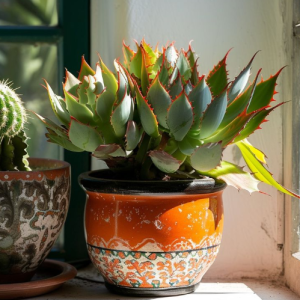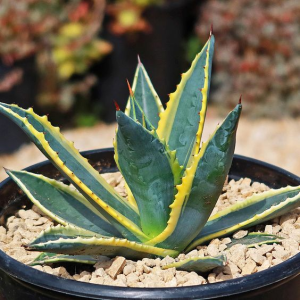- English
- Chinese
- French
- German
- Portuguese
- Spanish
- Russian
- Japanese
- Korean
- Arabic
- Irish
- Greek
- Turkish
- Italian
- Danish
- Romanian
- Indonesian
- Czech
- Afrikaans
- Swedish
- Polish
- Basque
- Catalan
- Esperanto
- Hindi
- Lao
- Albanian
- Amharic
- Armenian
- Azerbaijani
- Belarusian
- Bengali
- Bosnian
- Bulgarian
- Cebuano
- Chichewa
- Corsican
- Croatian
- Dutch
- Estonian
- Filipino
- Finnish
- Frisian
- Galician
- Georgian
- Gujarati
- Haitian
- Hausa
- Hawaiian
- Hebrew
- Hmong
- Hungarian
- Icelandic
- Igbo
- Javanese
- Kannada
- Kazakh
- Khmer
- Kurdish
- Kyrgyz
- Latin
- Latvian
- Lithuanian
- Luxembou..
- Macedonian
- Malagasy
- Malay
- Malayalam
- Maltese
- Maori
- Marathi
- Mongolian
- Burmese
- Nepali
- Norwegian
- Pashto
- Persian
- Punjabi
- Serbian
- Sesotho
- Sinhala
- Slovak
- Slovenian
- Somali
- Samoan
- Scots Gaelic
- Shona
- Sindhi
- Sundanese
- Swahili
- Tajik
- Tamil
- Telugu
- Thai
- Ukrainian
- Urdu
- Uzbek
- Vietnamese
- Welsh
- Xhosa
- Yiddish
- Yoruba
- Zulu
- Kinyarwanda
- Tatar
- Oriya
- Turkmen
- Uyghur

Those who like gardening sometimes choose agave as a highly beautiful plant as it has a unique appearance and needs little maintenance. Conversely, even if agave grows well in warm climates, many people still wonder if it might survive the severe winter temperatures.

Agave
Agave’s Cold Tolerance and Species’ Variations from One Another
Agave is a genus with a large variety of plant species; the degree to which different Agave species can resist cold conditions differs significantly amongst one another. Generally speaking, agave is native to very warm and arid areas like Mexico and the southwestern United States, where the minimal quantity of precipitation and high temperatures define the surroundings. Conversely, certain species that have more resilience to cold have evolved as the area of agave farming has grown so that they may still flourish at lower temperatures.
For example, the “Blue Agave” (Agave tequilana), a common species of Agave well-known for producing tequila, has a limited tolerance for low temperatures and usually requires a warm climate to thrive. On the other hand, the “American Agave” (Agave americana) is a cultivar that may flourish in conditions where temperatures drop to around -6 degrees Celsius and is more suited to resist lower temperatures. Another kind of agave said to be among the most cold-resistant species is the “hard-leaved agave,” Agave parryi. It may show some degree of cold resistance even in low temperatures below 0 degrees.
An environment appropriate for the growth of agave
Knowing the growth environment agave is cultivated in helps one decide whether or not it can withstand the winter outside. Particularly in hot and arid areas, agave is a plant that needs direct sunlight and thrives in strong light. Most agaves find temperatures between 15 and 30 degrees Celsius ideal.
Conversely, agaves do not flourish under too much humidity. Rain or snowfall in the winter might cause the ground to remain damp for a long amount of time, which would be bad for agave plant roots and readily result in root rot. Agaves therefore struggle to survive the winter months outdoors in conditions that are both moist and cold.
Winter’s precautions
Should you find yourself in an area with low winter temperatures but still choose to grow agaves outdoors, there are several care techniques that might help to raise their survival chances.
Selecting a cultivar with a great endurance to cold temperatures comes first. By choosing agave varieties established or verified to be able to survive cold temperatures in areas marked by cold weather, you might significantly raise your chances of success. Furthermore, you should check that the ground your agave is grown in drains adequately. Sand or gravel added to the soil can improve drainage and help to prevent waterlogging and root rot. This reduces waterlogging.
Mulch may also help the agave have some degree of protection. Before winter hits, you might cover the roots of the agave plant with a thick layer of hay, pine needles, or another kind of organic mulch to help retain the warmth of the soil and reduce the amount of cold air that reaches it.
Moving the plant is a smart idea whenever the temperature is rather low. The agave should, if at all possible, be transported inside or into a greenhouse for the winter. Certain agave types are not able to survive low temperatures; hence, even short periods of cold weather might be fatal to them; thus, it is essential to safeguard them indoors.
Agave’s Impact on the Climate of Different Sites
Agave is very successful in temperate and subtropical climates; yet, in regions classed as cold temperate and cold, the capacity of the plant to survive the winter outdoors depends on the local winter temperature and humidity.
Although winter temperatures in temperate locations are frequently not extremely low, frost should be sometimes anticipated. Choosing the appropriate hardy agave type and implementing the necessary protective measures, such mulch or temporary coverings, will often help to keep the agave safe while it is being grown outside over the winter if the winter temperatures lie between -5 degrees Celsius and 0 degrees Celsius and there is not much precipitation.
Conversely, winter temperatures in freezing locations might drop below -5 degrees Celsius for protracted periods of time and even below -15 degrees Celsius. Under these conditions, open air survival of even the toughest varieties of agave will be difficult. These areas would best be best served by bringing the agave inside to a location with enough light and a moderate temperature.

Agave Lophantha ‘Quadricolor’
Whether or whether an agave can survive the winter outdoors depends on many factors including the hardiness of the variety selected, the local winter temperature and humidity conditions, and the winter protection methods used. Hardy varieties may flourish outdoors in mild winter temperatures; nevertheless, in climatic circumstances too cold, it is advisable to move it within or use additional care to protect it. You will be able to maximize the winter survival of your agave and keep enjoying this beautiful and unique plant if you can become aware of the traits and needs of your agave and behave appropriately depending on the climatic circumstances in your location.
Previous News
Succulents need less waterNext News
The suitability of Alocasia plants in landscape...


